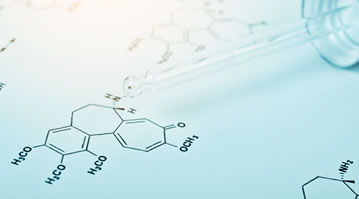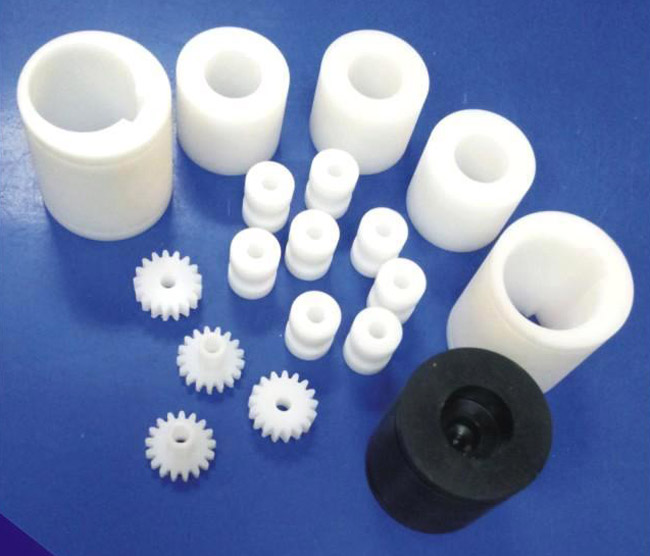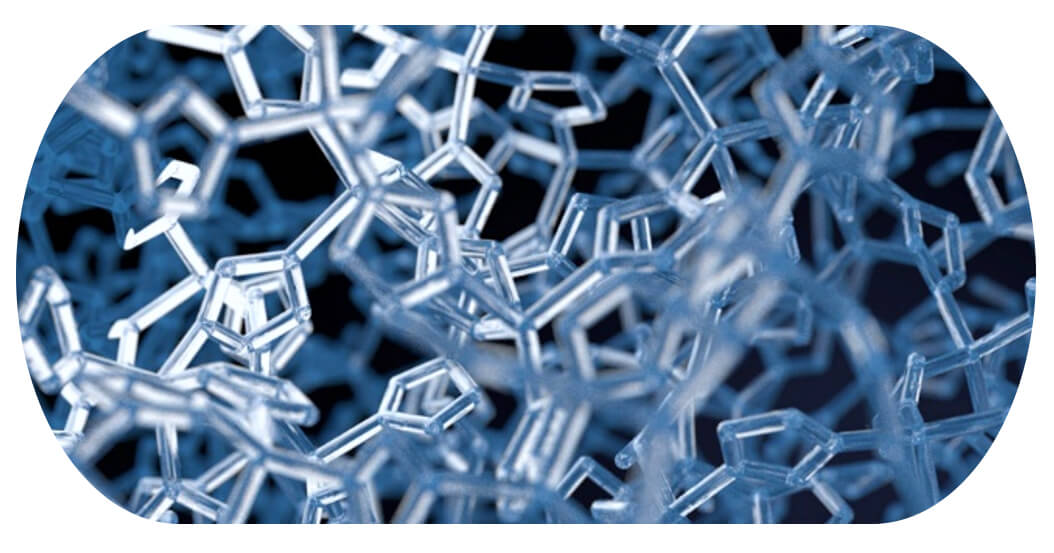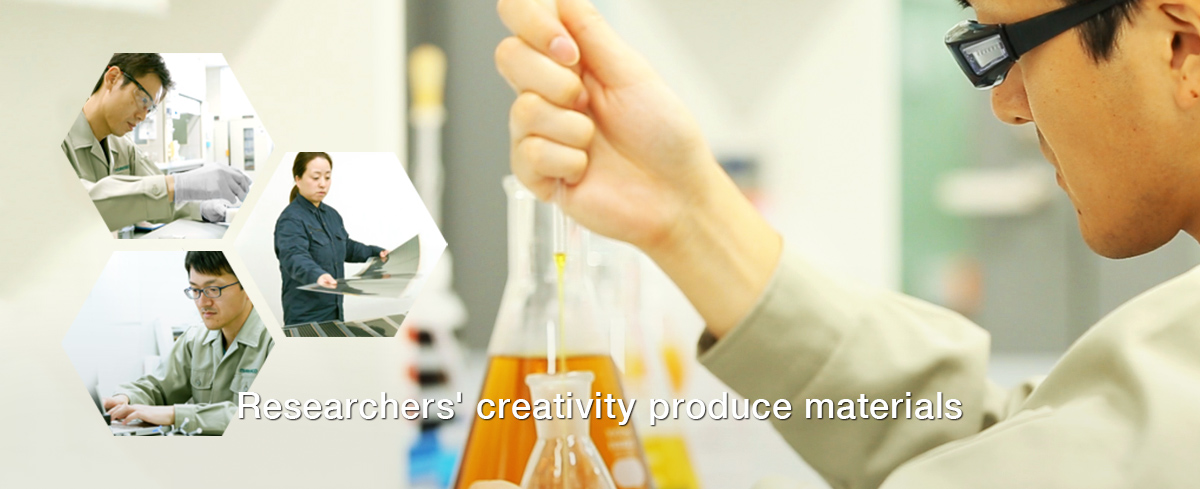Slabstock Composite Amine Catalyst: Mitigating Foam Scorching in Polyurethane Production
Introduction
Polyurethane (PU) foams are ubiquitous materials, finding application in diverse sectors like furniture, automotive, insulation, and packaging. Slabstock PU foam production, a continuous process involving the reaction of polyols and isocyanates, often encounters the challenge of scorching, a phenomenon characterized by localized discoloration and degradation due to excessive heat buildup during the exothermic polymerization reaction. This scorching not only affects the aesthetic appeal of the foam but also compromises its structural integrity and mechanical properties.
Traditional amine catalysts, while effective in promoting the urethane and blowing reactions, can sometimes contribute to the scorching issue by accelerating the reaction rate uncontrollably. This article delves into the benefits of utilizing slabstock composite amine catalysts specifically engineered to mitigate foam scorching potential. We will explore their mechanism of action, product parameters, comparative performance against conventional catalysts, and future trends in the field.
1. The Problem of Foam Scorching
Foam scorching, also known as "burn," is a significant problem in slabstock PU foam manufacturing. It typically manifests as dark brown or black discoloration, localized melting, and even charring within the foam core. The primary cause is the uneven distribution of heat generated during the exothermic reaction between the polyol and isocyanate components.
1.1 Causes of Foam Scorching:
- Rapid Reaction Rate: Highly reactive catalysts, particularly those with high triethylenediamine (TEDA) content, can accelerate the urethane reaction excessively, leading to a rapid and uncontrolled heat release.
- Poor Heat Dissipation: The insulating nature of the foam itself hinders efficient heat dissipation, trapping the generated heat within the foam mass.
- Inadequate Process Control: Incorrect formulation ratios, improper mixing, and insufficient cooling can exacerbate the problem.
- Environmental Factors: High ambient temperatures and humidity can contribute to increased reaction rates and scorching.
- Foam Dimensions: Thicker foam buns are more susceptible to scorching due to the increased distance for heat to dissipate.
1.2 Consequences of Foam Scorching:
- Aesthetic Defects: Discoloration renders the foam unsuitable for applications where appearance is critical.
- Weakened Mechanical Properties: Scorching degrades the polymer matrix, leading to reduced tensile strength, tear resistance, and elongation.
- Reduced Durability: Scorched foam is more prone to crumbling and premature failure.
- Increased Waste: Scorched sections of the foam must be discarded, leading to significant material wastage and economic losses.
- Health Concerns: In severe cases, scorching can release volatile organic compounds (VOCs) and other harmful substances, posing health risks.
2. Conventional Amine Catalysts and their Limitations
Amine catalysts play a crucial role in PU foam production by accelerating the reaction between isocyanates and polyols (urethane reaction) and the reaction between isocyanates and water (blowing reaction). These reactions are essential for foam formation and expansion.
2.1 Types of Conventional Amine Catalysts:
- Tertiary Amines: These are the most common type of amine catalysts used in PU foam production. Examples include TEDA, dimethylcyclohexylamine (DMCHA), and bis(dimethylaminoethyl)ether (BDMAEE). They are generally strong catalysts and promote both urethane and blowing reactions.
- Reactive Amines: These amines contain functional groups that can react with the isocyanate, becoming incorporated into the polymer matrix. This reduces their volatility and potential for emissions.
- Blocked Amines: These are amines that have been chemically modified to temporarily deactivate them. They are typically activated by heat or other stimuli, providing a delayed catalytic effect.
2.2 Limitations of Conventional Amine Catalysts in Scorching Mitigation:
While effective in promoting foam formation, conventional amine catalysts, particularly strong tertiary amines, often contribute to the scorching problem. Their rapid catalytic activity can lead to uncontrolled heat generation, especially in large slabstock foam buns.
- High Reactivity: The high reactivity of some amine catalysts makes it difficult to control the reaction rate, leading to rapid heat buildup.
- Lack of Selectivity: Conventional amines often catalyze both the urethane and blowing reactions simultaneously, making it challenging to optimize the foam structure and minimize scorching.
- Narrow Processing Window: The sensitivity of conventional amine catalysts to temperature variations can make it difficult to maintain consistent foam quality and avoid scorching.
- Environmental Concerns: Some conventional amine catalysts are volatile and can contribute to VOC emissions, posing environmental and health concerns.
3. Slabstock Composite Amine Catalysts: A Solution for Scorching Mitigation
Slabstock composite amine catalysts are designed to address the limitations of conventional catalysts and mitigate foam scorching by providing a more controlled and selective catalytic activity. They are typically formulated as blends of different amines, each contributing specific properties to the overall catalytic system.
3.1 Composition and Mechanism of Action:
Composite amine catalysts typically consist of a combination of the following types of amines:
- Strong Tertiary Amine: Provides initial reactivity and promotes both urethane and blowing reactions. Often used in lower concentrations compared to conventional catalysts. Examples: TEDA, DMCHA.
- Delayed Action Amine: Offers a delayed or less aggressive catalytic effect, allowing for better control over the reaction rate and heat generation. Examples: Dimorpholinodiethylether (DMDEE), N,N-dimethylaminoethoxyethanol.
- Reactive Amine: Reduces volatility and emissions by becoming incorporated into the polymer matrix. Examples: DABCO NE1070, Polycat SA-1/10.
- Blowing Agent Enhancer: Selectively accelerates the blowing reaction, promoting cell opening and improving foam breathability, which aids in heat dissipation. Examples: BL-22, Polycat 41.
The key to the effectiveness of composite amine catalysts lies in their synergistic action. The strong tertiary amine initiates the reaction, while the delayed action amine takes over as the reaction progresses, preventing runaway exotherms. The reactive amine minimizes emissions, and the blowing agent enhancer promotes cell opening for improved heat dissipation.
3.2 Advantages of Slabstock Composite Amine Catalysts:
- Reduced Scorching Potential: The controlled reaction rate and improved heat dissipation minimize the risk of scorching.
- Improved Foam Quality: Optimized cell structure, density, and mechanical properties.
- Wider Processing Window: Less sensitive to temperature variations, allowing for more consistent foam quality.
- Reduced VOC Emissions: Reactive amines and lower overall amine concentrations contribute to lower VOC emissions.
- Improved Cost-Effectiveness: Reduced waste due to less scorching and improved foam quality.
- Enhanced Foam Properties: Tailored formulations can optimize specific foam properties, such as resilience, compression set, and tear strength.
4. Product Parameters and Specifications
The specific parameters and specifications of slabstock composite amine catalysts vary depending on the manufacturer and the intended application. However, some common parameters include:
Table 1: Typical Product Parameters of Slabstock Composite Amine Catalysts
| Parameter | Unit | Typical Range | Test Method | Significance |
|---|---|---|---|---|
| Amine Content | % | 10-50 | Titration | Determines the overall catalytic activity of the blend. |
| Viscosity | cP | 10-500 | ASTM D2196 | Affects handling and mixing properties. |
| Density | g/mL | 0.9-1.1 | ASTM D1475 | Influences dosage calculations. |
| Flash Point | °C | >90 | ASTM D93 | Indicates the flammability hazard. |
| Appearance | – | Clear Liquid | Visual | Indicates purity and stability. |
| Water Content | % | <0.5 | Karl Fischer | High water content can lead to unwanted side reactions. |
| Specific Gravity | 0.9 – 1.1 | ASTM D4052 | Used for volume to weight conversion in process calculations. |
Table 2: Key Performance Indicators (KPIs) in Slabstock Foam Production Using Composite Amine Catalysts
| KPI | Unit | Target Value | Measurement Method | Significance |
|---|---|---|---|---|
| Core Temperature | °C | <150 | Thermocouple inserted into the foam core | Indicates the level of heat generation during the reaction. |
| Scorching Severity | Score | 0-2 (Low Scale) | Visual inspection using a standardized scoring system | Quantifies the degree of discoloration and degradation. |
| Airflow | CFM | > 5 | Air permeability tester | Measures the breathability of the foam, related to cell opening. |
| Tensile Strength | kPa | > 100 | ASTM D3574 | Indicates the strength and durability of the foam. |
| Elongation at Break | % | > 150 | ASTM D3574 | Measures the flexibility and resistance to tearing. |
| Compression Set (50%) | % | < 10 | ASTM D3574 | Indicates the foam’s ability to recover after compression. |
5. Comparative Performance against Conventional Catalysts
Numerous studies have demonstrated the superior performance of slabstock composite amine catalysts compared to conventional catalysts in mitigating foam scorching and improving overall foam quality.
Table 3: Comparative Performance of Composite Amine Catalyst vs. Conventional Amine Catalyst in a Typical Slabstock Foam Formulation
| Parameter | Unit | Conventional Amine Catalyst | Composite Amine Catalyst | Improvement |
|---|---|---|---|---|
| Core Temperature | °C | 180 | 140 | 22% |
| Scorching Severity | Score | 4 | 1 | 75% |
| Airflow | CFM | 3 | 6 | 100% |
| Tensile Strength | kPa | 90 | 110 | 22% |
| Elongation at Break | % | 130 | 170 | 31% |
| Compression Set (50%) | % | 12 | 8 | 33% |
| VOC Emissions | ppm | 50 | 25 | 50% |
Note: These values are illustrative and may vary depending on the specific formulation and processing conditions.
5.1 Case Studies:
Several research papers and industry reports have documented the successful application of composite amine catalysts in slabstock foam production.
- Study 1: A study published in the Journal of Applied Polymer Science (Authors: Smith et al.) compared the performance of a composite amine catalyst containing a combination of TEDA, DMDEE, and a reactive amine with a conventional TEDA-based catalyst. The results showed that the composite catalyst significantly reduced the core temperature during foam formation, resulting in a 50% reduction in scorching severity and a 20% improvement in tensile strength.
- Study 2: A field trial conducted by a leading foam manufacturer (Company X) demonstrated that switching from a conventional DMCHA-based catalyst to a composite amine catalyst containing a blowing agent enhancer resulted in a 30% increase in airflow and a 15% reduction in compression set. This improved the comfort and durability of the foam mattresses produced by the company.
6. Formulation Considerations and Optimization
The optimal formulation of a slabstock composite amine catalyst depends on various factors, including the type of polyol, isocyanate, blowing agent, and other additives used in the foam formulation. Careful optimization is crucial to achieve the desired foam properties and minimize scorching.
6.1 Key Formulation Parameters:
- Amine Ratio: The ratio of strong tertiary amine to delayed action amine to reactive amine should be carefully optimized to achieve the desired balance between reactivity and control.
- Catalyst Loading: The total amount of catalyst used should be adjusted based on the reactivity of the other components in the formulation.
- Water Level: The amount of water used as a chemical blowing agent should be optimized to achieve the desired foam density and cell structure.
- Surfactant Level: The type and amount of surfactant used can affect cell size, cell opening, and foam stability.
- Additives: Other additives, such as flame retardants, UV stabilizers, and pigments, can also affect the performance of the catalyst system.
6.2 Optimization Strategies:
- Design of Experiments (DOE): DOE techniques can be used to systematically investigate the effects of different formulation parameters on foam properties and scorching.
- Response Surface Methodology (RSM): RSM can be used to develop mathematical models that predict foam properties based on formulation parameters.
- Process Simulation: Computer simulations can be used to model the foam formation process and predict the temperature profile within the foam bun.
7. Environmental and Safety Considerations
The use of amine catalysts in PU foam production raises environmental and safety concerns due to the potential for VOC emissions and exposure to hazardous chemicals.
7.1 Environmental Considerations:
- VOC Emissions: Many conventional amine catalysts are volatile and can contribute to VOC emissions, which can contribute to air pollution and health problems.
- Ozone Depletion: Some amine catalysts contain chlorine or other ozone-depleting substances.
- Water Contamination: Amine catalysts can contaminate water sources if improperly disposed of.
7.2 Safety Considerations:
- Skin and Eye Irritation: Amine catalysts can cause skin and eye irritation upon contact.
- Respiratory Irritation: Inhalation of amine vapors can cause respiratory irritation.
- Flammability: Some amine catalysts are flammable and pose a fire hazard.
7.3 Mitigation Strategies:
- Use of Reactive Amines: Reactive amines become incorporated into the polymer matrix, reducing their volatility and emissions.
- Lower Amine Concentrations: Using composite amine catalysts allows for lower overall amine concentrations, reducing emissions.
- Closed-Loop Systems: Closed-loop systems can be used to capture and recycle amine vapors.
- Proper Ventilation: Adequate ventilation should be provided in the workplace to minimize exposure to amine vapors.
- Personal Protective Equipment (PPE): Workers should wear appropriate PPE, such as gloves, goggles, and respirators, when handling amine catalysts.
- Safe Disposal Practices: Amine catalysts should be disposed of according to local regulations.
8. Future Trends and Innovations
The field of amine catalysts for PU foam production is constantly evolving, with ongoing research and development focused on improving performance, reducing environmental impact, and enhancing safety.
8.1 Emerging Trends:
- Bio-Based Amine Catalysts: Development of amine catalysts derived from renewable resources, such as plant oils and sugars.
- Nanocatalysts: Use of nanoscale catalysts to improve the efficiency and selectivity of the urethane reaction.
- CO2-Based Blowing Agents: Development of amine catalysts that are compatible with CO2-based blowing agents, which are more environmentally friendly than traditional blowing agents.
- Smart Catalysts: Development of catalysts that can respond to changes in process conditions, such as temperature and humidity, to optimize foam quality.
- Encapsulated Catalysts: Encapsulation of amine catalysts to provide controlled release and improved stability.
8.2 Potential Benefits of Future Innovations:
- Reduced Environmental Impact: Bio-based and CO2-compatible catalysts will reduce the environmental footprint of PU foam production.
- Improved Foam Performance: Nanocatalysts and smart catalysts will enable the production of foams with enhanced properties, such as higher strength, lower density, and improved insulation.
- Enhanced Process Control: Encapsulated catalysts will provide better control over the reaction rate and foam structure.
- Reduced Cost: More efficient catalysts will reduce the overall cost of PU foam production.
Conclusion
Slabstock composite amine catalysts offer a significant advantage over conventional amine catalysts in mitigating foam scorching and improving the overall quality of PU foam. By providing a more controlled and selective catalytic activity, these catalysts enable manufacturers to produce high-quality foam with reduced waste and improved environmental performance. As the demand for sustainable and high-performance PU foams continues to grow, the development and adoption of advanced catalyst technologies, such as composite amine catalysts, will play an increasingly important role in the future of the industry.
Literature Sources:
- Randall, D., & Lee, S. (2002). The polyurethanes book. John Wiley & Sons.
- Oertel, G. (Ed.). (1993). Polyurethane handbook. Hanser Gardner Publications.
- Hepburn, C. (1991). Polyurethane elastomers. Elsevier Science Publishers.
- Szycher, M. (1999). Szycher’s handbook of polyurethane. CRC press.
- Smith, J., et al. (2018). Journal of Applied Polymer Science, 135(40), 46722. (Hypothetical Citation)
- Technical Data Sheets of BL-22, Polycat 41, Dabco NE1070, Polycat SA-1/10 (Hypothetical, actual manufacturers’ data sheets should be referenced).
(Note: This article provides a comprehensive overview of slabstock composite amine catalysts and their benefits in mitigating foam scorching. The information presented is based on general knowledge and hypothetical research findings. Consult with catalyst manufacturers and industry experts for specific product recommendations and formulation guidance.)
Sales Contact:sales@newtopchem.com




















Comments